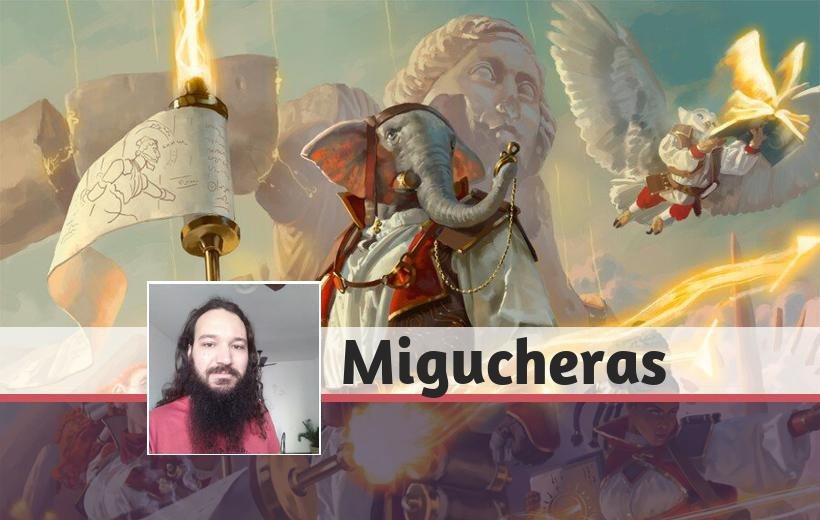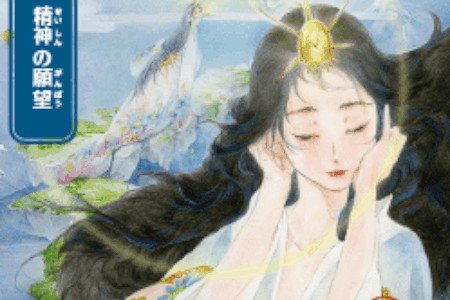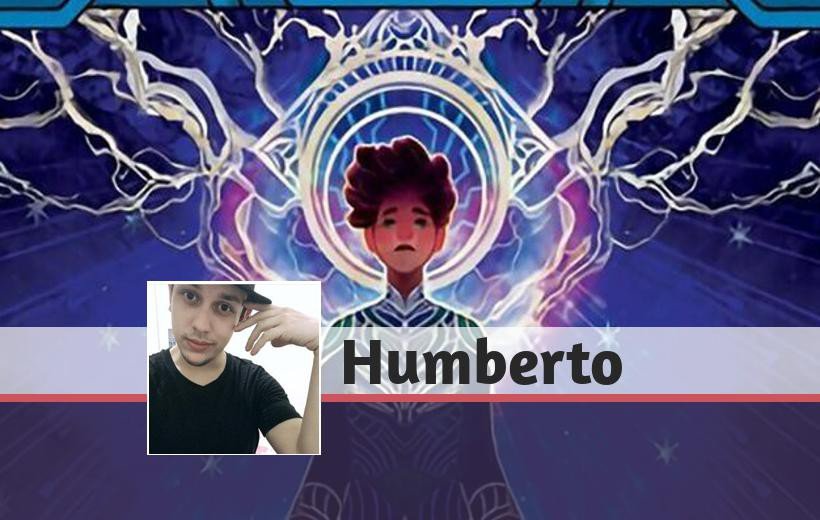Greetings,
The time has come for Spoiler season, and with that a new format to conquer.
Personally, what attracts me the most in Draft is that the game pieces change completely with each release, so there is always room for more learning.
One way to gain some advantage at the beginning of the format is to do your homework and study the available cards. It is much simpler to choose something when you open the booster in pack 1 pick 1 and you already know what matters "reading the images" than trying to read each card one by one with the clock against you.
Today we're going to introduce you to some theoretical concepts and how to use them to evaluate new cards, and then try to apply that in practice by looking at some of Strixhaven's spoilers.
Theory of Quadrants
Our first thoery concept is an idea presented for the first time by Brian Wong on the episode 184 from the podcast Limited Resources.
The way Brian proposes to look at the cards is: normally a game of Draft can be in any of four scenarios. How good is the card in each of these scenarios?
Development.
The first four or five turns of the game. Does this card establish a presence at the table, or does it improve your future turns?
- Creatures played on curve that pressure their opponent to act.
- Efficient interaction - Remove a creature on turn 3 for 1 mana and spend the other two to play another creature, for example.
- Mana ramp. "Skip the curve" of the first turns.

Parity.
The situation is balanced. Both players do not have good attacks, life points are not under pressure. Does this card help you get out of this situation and start winning the game?
- Evasive creatures that can start attacking.
- Draw more cards to win the resources game.
- Remove your opponent's blockers.

Ahead.
You are attacking and winning. Does the card help you win the game quickly?
- Combat tricks that trade favorably in mana and push damage.
- Basically any card that removes blockers and / or adds attackers to the table works well in this scenario.

Behind.
You are losing the game, you need to defend yourself. Cards that help you turn a defeat into a victory.
- Large and / or resilient creatures that "nullify" multiple creatures of your opponent.
- Removals, especially sweepers.
Generally speaking, if a card is good in multiple situations, it is a card that you want to include in your deck. Those that stand out in just one of the quadrants are more situational and will depend on your game plan.
It is always important to ask yourself: what does my deck want to do? What is my plan?
An aggressive deck wants to use cards that are better in development and in playing ahead, as these are the scenarios in which you are expected to play most of the time. Putting cards that only work when you are behind on an aggro deck is to bet that your game plan will not work and ends up being counterproductive.
Meanwhile, a deck at the other end of the aggro-control spectrum wants to use cards that are better at parity and behind, as it will spend the beginning of the game trying to defend itself and eventually winning at the end of the game through a card quality advantage , or resources.
A midrange deck, on the other hand, is a more delicate issue, because as your plan is not so focused you need: A. cards that are good in multiple quadrants, or B. a balance of the right tools for each one.

Starting with the new spoilers, this is an example of a card that shines in all quarters - even in development, making a 3/2 in turn 5 that removes an opponent's creature is a great deal, while also being a good card when you are behind. The card can even break parity by digging for more resources, or end the game with the pump effect.
This theory has been the basis of card evaluation for almost eight years. However, in recent times, the design of the new sets has been increasingly based on synergy, so that the Theory of Quadrants is still very useful but does not explain everything that goes on in a contemporary Draft format. Cards like Goldvein Pick, Stonework Packbeast and Forbidden Friendship don't look very good when looked at under these lenses but they are key pieces of their respective environments. Let's go to the next topic.
Theory of Sinergy
As a way to complement the Quadrant Theory, Ben Werne presented his Theory of Synergy in the hyperlink(episode 174 of the Lords of Limited podcast.
In addition to looking at the cards in an abstract scenario, we look at them in relation to the rest of the set, based on 4 criteria. From this perspective, we are looking for favorable interactions that create a result that is greater than the sum of its parts. Always remember that we want to build a deck and not a pile of cards.
Mechanics.
What are the main mechanics of the set, and how does the card interact with them? Is it an "enabler" for these mechanics to work? Or a "payoff" that rewards you for using these mechanics?
Forbidden Friendship: great synergy with Mutation, cards that sacrifice creatures or that care that you have a Human and a Non-Human like Of One Mind.
Stonework Packbeast: a colorless card that improves any card that cares about Party in your deck, and even corrects your mana if your deck is slower and interested in splashes.
Goldvein Pick: great synergy with Runes as it only costs 1 to equip and still produces mana for Runes of other colors. A much more subtle interaction here is the size of the creatures of the set, so that a 2-mana creature equipped in turn 3 with the Pick will most likely be able to attack freely.

Cards on color.
How does the card interact with cards of the same color, especially commons?
When we look at each color asking this question, we can find which colors are deeper and more synergistic in themselves, and which work best as a support color for your decks.
Goldvein Pick is somewhat of a white card in Kaldheim, as it works especially well with flying creatures, and white has three common fliers.
The trio Sneaking Guide, Grotag Bug-Catcher and Ardent Electromancer in Zendikar was a powerful curve, and each copy of one of those cards in your deck increased the potential of all the others.
Bushmeat Poacher in Ikoria was a deck by itself in combination with tools like Whisper Squad, Durable Coilbug, Nightsquad Commando that provide resources to have to sacrifice every turn.
Iron Verdict is our example of a bad card in this case. Although it looks like a powerful card out of context, the reality is that white decks in Kaldheim will almost always be interested in playing ahead, and restricting damage to tapped creatures means that you only play it when you're behind.

Cards in other colors
How compatible is this card with cards of other colors? This is where the question of archetypes in Draft comes in. It is interesting to identify which are the "secretly golden" cards of the set, those that lose a lot of power when they are on the wrong decks. While cards that play well in their respective four archetypes are much more desirable picks, especially at the beginning of the Draft.
Squash for five mana is too inefficient, and something that a Boros deck (which doesn't even need removals) or Rakdos (which has access to Feed the Serpent) would not include. The card is more interesting in Gruul, which has access to some Changelings, but it shines especially in Izzet, which has the highest density of pieces to reduce its mana cost.
Kor Blademaster in Zendikar was a huge threat in the tribal warrior Boros, but did almost nothing on an Azorius Party deck, Orzhov Clerics or Selesnya Landfall.
Skemfar Shadowsage alone is quite bad. It improves a little the more tribal your deck (a Rakdos built with Berserkers for example) but it is one of the best possible cards in Golgari where you can take advantage of the high density of the Elves in green.

Strategic Compatibility
Finally, how does the card work within the game plans available in the format? Are there tools to maximize your potential given the expected quadrants, or is it a great card that doesn't have a home?
Roil Eruption was not the best common of its format for nothing - besides being a super efficient creature removal, it had the "opponent removal" mode that was very common in aggressive matches involving two tribal decks and / or Party .
Grasp of Darkness, in spite of being absurd in a vacuum, he suffered too much because of Black's terrible positioning in M21. The Naya colors were too aggressive and the black cards just couldn't keep up. It would be an excellent pick in Quadrant Theory but it was not justified given the context.
Dwarven Hammer is one of the best curve toppers possible in Kaldheim as it adds an extra game plan to your decks without much cost. I'll try to kill you quickly here, did it work? Excellent! If it didn't work, now I have this hammer that turns anything into a huge threat for you to deal with.

How to use all this in practice? Basically you are listing everything that interacts with that particular card X under any of these criteria, and the longer that list, the more desirable it becomes in the context of the format. You will not literally write these lists, but the experience during your games will make them look natural in your head, almost intuitive as your mastery of the format increases.
Notes on a scale and the 5 R's
If you follow Draft formats for a while you must probably have seen the famous Limited Set Reviews, where two players sit down for seven or eiht hours and evaluate all the cards in the set using these criteria and assign grades.
Normally, the classic Limited Resources scale from A to F is used:
A: bombs, cards that stabilize or turn the game on their own.
B: powerful cards that make you want to play with that color.
C: cards that fill a role in the deck and fill its curve.
D: replaceable or situational cards that you don't want to include in the deck generally.
F: Unplayable, Constructed material or sideboard piece.
The episode 180 of Lords of Limited proposes an alternative grading, named the 5 R's:
Raw power - raw power, is where bombs and super efficient cards come into any deck regardless of strategy like Sarulf's Packmate.
Reasons - Reasons are the cards that give you direction in the Draft. With a Reason, you want cards that are strategically compatible to maximize it and end with a powerful synergy.
Rewards - rewards are not as powerful as Reasons to influence you to drafting a certain archetype, but when you already know that you entered that archetype they are great cards and that you always want to include.
Roleplayers - cards that play a role in your deck, maximize and are maximized for your reasons, rewards and other roleplayers.
Replaceables - replaceable, those cards that you don't miss at the end of the Draft and only put in your deck because unfortunately you don't have enough cards from the best categories.
The Raw Power and Reasons categories are the least numerous and the most interesting to decorate, as we get rid of a huge mental burden when we open p1p1 and instead of 15 choices we can quickly narrow it down to two or three cards that are worthwhile there.
The distinction between Reasons and Rewards is also something very interesting to do beforehand, helping a lot in reading signals during the draft, and to understand more clearly what archetypes are open at a given table.
As a brief note:
It is very difficult to see all the "landscape" of the set and where all the synergies fit only in theory, without playing with the cards. Never forget to always ask the questions and refine the answers according to your own experience, your opponents' decks, people you watch playing, etc. The Draft metagame itself naturally leads us to these reevaluations. It is not because someone said that the card X is good on day 1 of the format that it will continue to perform so well a month after the release.
Strixhaven
Strixhaven has been shown mechanically as an set in which there are five factions and "magic matters" - specifically instant and sorceries. My two initial considerations are:
1. It is likely that archetypes that do not correspond to one of the factions - such as Azorius or Gruul for example - are not supported to be drafted in the set.
2. Be careful how many spells you put on the deck that don't affect the board in any way. This goes for any format, but it is good to point out since we'll probably focus on spells.
Magecraft
A triggered ability that gives you a benefit for casting (or copying) Instants and Sorceries.
Thinking of the Theory of Synergy, each card with Magecraft that you include improves all your spells in a subtle way - because in addition to the effect printed on the card you get an extra out of the triggers.

Learn / Lesson
We have two interconnected mechanics. Learn is a game action that allows you to take a Lesson out of the game and place it in your hand - or discard a card to draw a card.
Lesson is a subtype of Instants and Sorceries. They appear to be low power cards, but the idea is that you will not include them in your main deck, but leave them on the sideboard.
It was confirmed that every booster will have an specific slot for Lessons.

Personally, I dropped my jaw when I first saw this mechanic.
How do you solve the problem of adding too many spells that don't affect the board in your deck? Access to spells that are not in it. And in terms of flavor, isn't receiving a magic that isn't in your repertoire a beautiful learning process?
The Mystical Archives
Representing the Strixhaven's library, there is a list of 63 cards - classics from Magic's History - that also appear in a specific slot of the boosters. The main implication is that we will have a lot more variety during matches in the format - and also more difficulty playing around all possible cards.

For last, but not least, let's try to evaluate some specific cards for example:

Creatures that cost 1 mana are not something that every deck wants, as their impact is usually too small when par or behind in the game. But specifically on aggressive decks that want to maximize development, putting pressure on your opponent since turn 1 is very desirable. The question is always: how useful is this creature as the game progresses for a few turns?
It seems that the Lorehold deck is more focused on a long game, while Silverquill is the aggressive archetype of the set, which leads us to infer that this card is "multicolored" white and black in a way since it only works well from synergies.
Depending on the rest of the cards that put counters incidentally, if you can make it 2/2 or even 3/3 without much effort it seems like a huge value: 4/4 or 6/6 stats for 1 mana.
Verdict: Roleplayer in Silverquill.

Creatures that have Learn interest me a lot, as they help with the issue of the density of spells on the deck. A 2/1 for 2 mana that draws a card is an acceptable play on turn 2 if you don't have another better 2-drop.
However, imagine that you have built a stack of Lessons on your sideboard with different and situational effects. In this case, cards with Learn are more interesting when you find a point in the game where you can optimize one of your Lessons, which is difficult to predict in turn 2, without so much information about the game. That is, the card can work well either in parity, in front or behind, depending on which effects we will have acess to.
Finally, if you've exhausted your Lessons at the end of the game, you can still exchange extra land for an extra card - not so terrible.
Verdict: difficult to know without seeing all the Lessons, but I would put between Reward for picking Lessons or even Reason for picking Lessons.

Imagine if all your spells drew a card. If you do Archmage in turn 4 and your opponent does not have an immediate response, untapping with that gives you the chance to make your game shoot. In a parity scenario it starts to generate incredible value, and when it is in the front it buries the opponent.
When you are behind a 2/2 for 4 mana with no immediate impact it is not exactly what will save you. However, it is possible to build your deck in order to minimize this risk: with enough board presence in turns 2 and 3 and inexpensive interactions, you can afford to play a 2/2 that does not want to go into combat, since it will not see yourself so much in the behind quadrant.
Verdict: Raw power .
That is what we have for today as an initial look at Strixhaven. Are you excited for the new set?
I appreciate your attention and see you soon!














— Comments 0
, Reactions 1
Be the first to comment